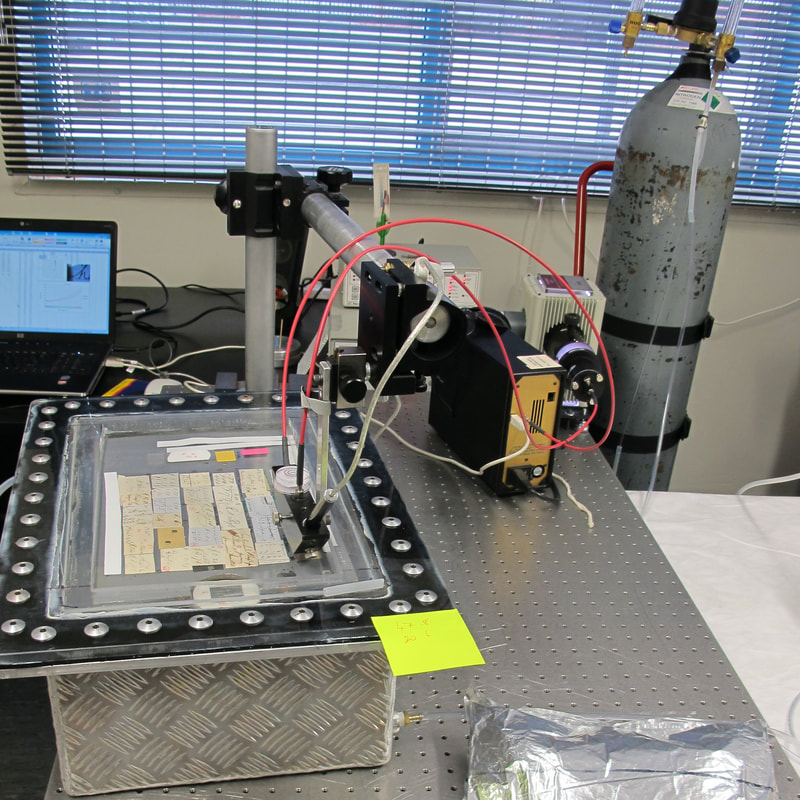SERVICES
I provide an on-site service to assess the lightfastness of high value and/or characteristic museum, gallery, library and archival material. With my state of the art portable equipment and substantial collections management and research experience in this area I can offer the following services:
WHY FADE TEST?Conservators don't necessarily know what the actual fading rate of a potentially light-sensitive pigment or dye is, even an identified and well-characterised colourant, let alone the vast range of unknown colouring materials in modern art collections, social or natural history museums and archives.
This is not because conservators don't know their materials, but because the actual fading rates of individual colourants typically depend on their unique physical and chemical contexts and how much they have already faded, as much as they are determined by their chemical identity. So even the identification of a dye or pigment (and associated mordants etc) doesn't necessarily provide a fading rate. In some cases - ball point pen inks are a good example - lightfastness varies so much that the only possible generalisation is that it is impossible to generalise; in other cases rates based on sparse published data, anecdotal evidence, and personal experience are more valid, but it is not possible to know without direct testing. The guesstimates we have relied on until now, no matter how conservative, will inevitably over-expose some objects and unnecessarily restrict the display of many more, and for institutions with permanent exhibitions the high rate of precautionary object replacements is likely to be extremely expensive as well as unnecessarily restrictive in terms of access and light levels. Using a combination of microfading as a screening method and a concise structured risk assessment process to contextualise the data it is possible to identify and protect the most light-sensitive and in-demand objects and relax restrictions on many more. Curators can spend their time curating rather than searching for alternatives to objects forced off display by unnecessary lighting restrictions; conservators devote less time to routine exhibition work; and most importantly visitors get to view the objects they came to see under decent lighting conditions. |
Bruce Ford speaking at the CRCC 50th Anniversary Conference in Paris October 2013
Establishing the spontaneous reoxidation in air of photoreduced iron gall ink. This project documented the Prussian blue like response of iron gall inks to light - that is that anoxic conditions accelerate these inks' response to light and maintain them in the faded (photoreduced) state. This has implications for the practice of housing historic documents in hypoxic or anoxic cases as is most famously the case for the US Charters of Freedom documents.
Ford, B. 2014. The accelerated light fading of iron gall inks in air, hypoxia and near-anoxia. In ICOM-CC 17th Triennial Conference Preprints, Melbourne, 15–19 September 2014, ed. J. Bridgland, art. 0604, 8 pp. Paris: International Council of Museums. (ISBN 978-92-9012-410-8) |
Last updated: July 2023
